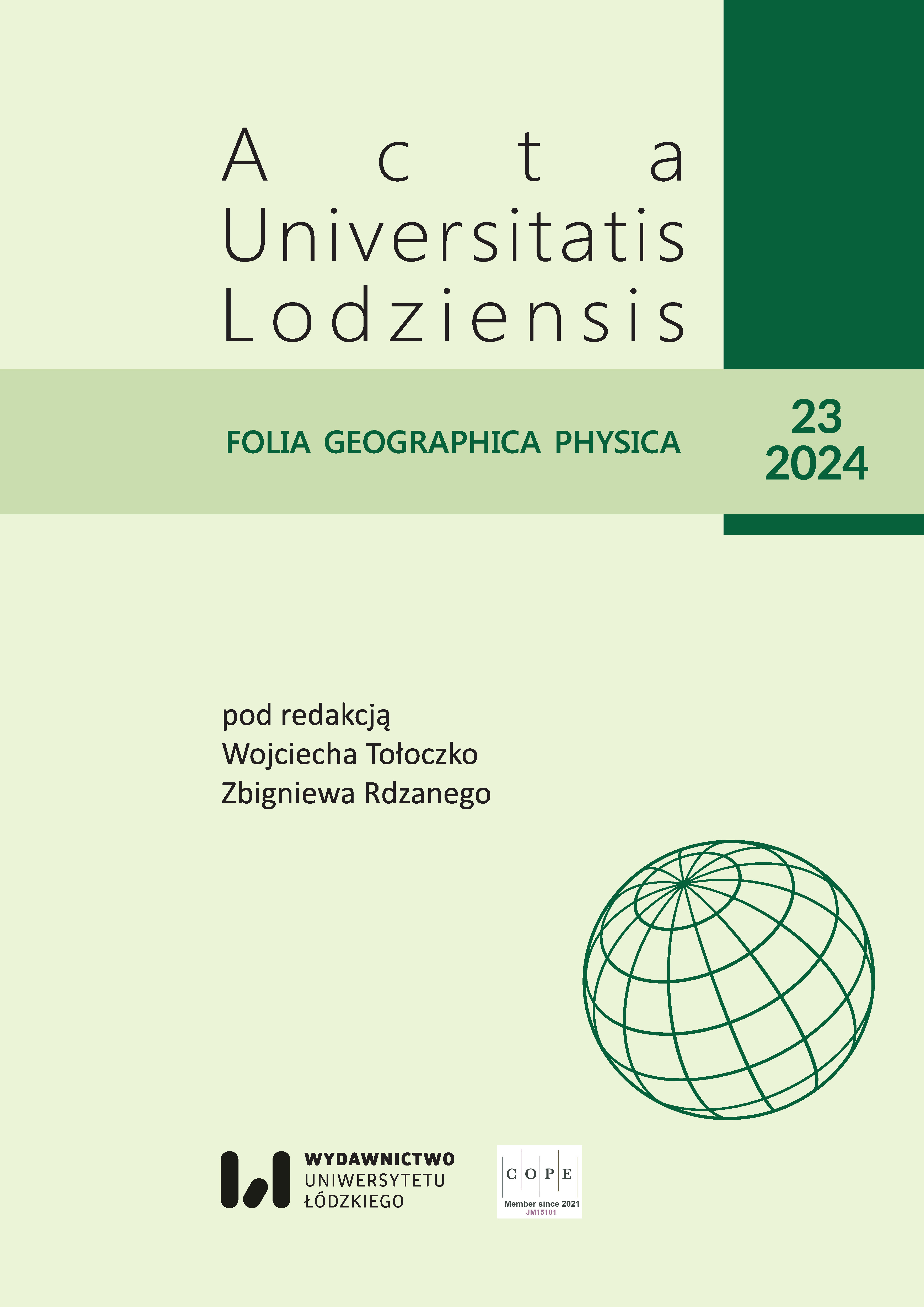Zapis aktywności dymarskiej w aluwiach środkowej Czarnej Nidy (woj. świętokrzyskie) – studium przypadku
Record of bloomeries activity in the alluvium of the central Czarna Nida River (Świętokrzyskie Voivodeship) – case study
Author(s): Paweł Przepióra, Tomasz Kalicki, Łukasz Podrzycki, Karol ZubekSubject(s): Geography, Regional studies, Physical Geopgraphy
Published by: Wydawnictwo Uniwersytetu Łódzkiego
Keywords: Alluvia; bloomeries; microslags; Magnetic Spherule Separation; Czarna Nida River
Summary/Abstract: Czarna Nida is a meandering third-order river flowing through the central part of the Kielce Upland. The catchment area includes a fragment of the Paleozoic core of the Holy Cross Mountains and the southwestern part of their Permian-Mesozoic margin. The aim of the article was to identify and interpret traces of metallurgical activity in the Nida bloomery center region from the Roman period in the alluvium of the middle section of this river in the Łaziska – Ostrów cross-section. The Magnetic Spherule Separation method (MSS) was done, which has recently been used on the other Holy Cross Mountains rivers, where different ages metallurgical activity has been developing. There are only a few traces of metallurgical activity in the alluvium of the Czarna Nida floodplain. Microspherules were detected in the fillings of oxbow lakes from the Roman period and in contemporary alluvium. Otherwise, in the fillings of medieval oxbow lakes a microslags was found. The small number of microartefacts in the sediments is most likely related to periodic or episodic activity of prehistoric metallurgy over a long period of time or small scale of production. Their occurrence in younger sediments is the result of later redeposition.
Journal: Acta Universitatis Lodziensis. Folia Geographica Physica
- Issue Year: 2023
- Issue No: 23
- Page Range: 7-18
- Page Count: 12
- Language: Polish

